(By Ross Squire (President, NY Coalition for Recreational Fishing; 1@32 Pledge on Facebook)
ASMFC Draft Addendum 6 Recommendations and Talking Points
After much discussion and review we have formulated our recommendations for the options presented in the Draft Addendum. You will find the recommendations and some talking points and reasoning below. I am also attaching a document containing the same info. Contact info on where to send your letters and emails will be posted in the next few days.
Some quick comments. There really are pros and cons for every one of the harvest reduction proposals. Cases can be made for and against slot sizes and options that target mostly larger fish. Ultimately, we option to select the 1@35″ or 1@36″ size limit. Our greatest concern is that the impact of the slot size on the long-term health of the fishery is a huge unknown. This is clearly stated in the Draft Addendum. At this time we just did not think that it was worth the risk so we opted for the regulation that is closest to what worked last time. 1@36 was very successful in the rebuilding of the fishery and our expectation is that history will repeat itself.
The second factor that went into our recommendation is that we believe that it is important to allow as many of the small fish that we are seeing to have as many spawning years as possible before they become exploitable. We recognize the issues related to dead releases but our expectation is that along with the use of circle hooks, this option will provide the greatest protection to smaller fish.
So give this a review. While it would be great if there were overwhelming consensus within the recreational community, we encourage you to come to your own decision. Please feel free to share your thoughts and comments.
ASMFC Draft Addendum 6 Recommendations and Talking Points
RECOMMENDATION: Option 2: 18% reductions applied equally between recreational and commercial sector
Talking points:
• All sectors contribute to the wellness or depletion of a fishery. Given that striped bass are overfished with overfishing occurring our belief is that all sectors should share equally in the reduction.
• This opinion is supported by the realization that the commercial sector was handed a gift with Addendum 6. Their harvest reductions are based on the Addendum IV quotas and not their 2017 harvest. We have no understanding of why the Management Board would not apply the same standard of the 2017 harvest that is being used for the recreational sector. When you look at the new the new quota of 4,871,182 pounds in Addendum 6 that applies the 18% reduction, it is actually an INCREASE from the commercial harvest of 4,796,395 in 2017. When the 1.8% option is applied to the commercial sector the quota balloons to 5,833,537 pounds, an increase of 22% above their 2017 harvest.
• We long for the day when the ASMFC is consistent with the criteria that they use when computing the recreational and commercial sector harvest reductions.
RECOMMENDATION: Option 2-A1: 1@35”; anticipated total removal reduction of 18%
Talking points:
• There are valid pros and cons to all of the options listed.
• We have concerns about proposals that target small fish and also concerns about options that target specific year classes.
• While our initial reaction is to favor the option with the highest anticipated total removals, we are worried about the lack of data on the impact a slot will have on the overall fishery. We are worried when we read in the Draft Addendum that the long term conservation benefits of implementing slot limits may not be realized if effort is concentrated on fish within the slot limit.
• Ultimately, there is no way that we can ignore or discount past history. We have seen the effect of 1@36” as that was the regulation that was adopted that led to the rebuilding of the striped bass fishery.
• We are opting to trust that history will repeat itself with 1@35”.
• There are a significant number of smaller fish in the fishery. Strong year classes from 2014 and 2015 need to be protected. Option 2-A1 will allow these fish the largest number of spawning years before they become exploitable. This is critical to the rebuilding of the striped bass fishery.
• We recognize that there will be some within the recreational sector that favor a 28”-35” slot. We believe that it is important to permit smaller fish as many years as possible to spawn before making them exploitable.
• The option is the easiest to enforce.
• The option will result in more caught fish being kept out of water for the least amount of time.
• While this option will exploit the larger fish, the impact will be spread out over a number of year classes.
RECOMMENDATION: Option 2-B1 1@18”; anticipated total removal reduction of 20%
Talking points:
• We are deeply concerned about the impact of all of the Chesapeake Bay options on the critically important younger year classes. Addendum IV was unsuccessful in its efforts to protect the critical 2011 year class, which was, and continues to be, overexploited by Maryland anglers.
• In total 2,500,000 more fish were harvested by Chesapeake Bay anglers than were expected to be harvested in Addendum IV; many of these fish were part of the 2011 year class that Addendum IV was intended to protect.
• While we are not in favor of any of the options listed for the Chesapeake Bay, Option 2-B1 is expected to achieve the greatest harvest reduction. It is for this reason that we recommend Option 2-B1.
• We are deeply disappointed that the Draft Addendum 6 harvest reductions are based on the overage that Maryland achieved and not the Addendum IV harvest levels that they should have been achieving. The options presented in this draft addendum reward Maryland for the gross overharvesting that occurred.
RECOMMENDATION: Option 3.2.B Mandatory use of non-offset circle hooks
Talking points:
• All efforts should be taken to reduce dead releases. Circle hooks have been proven in multiple studies to reduce fish mortality and should be required when fishing live and dead bait.
• Option 3.2.B must be accompanied by an aggressive education and awareness campaign. Different angling methods are used when using non-offset circle hooks. If these methods are not used when fishing with circle hooks, anglers will become frustrated at their difficulty in landing striped bass. This could lead to issues of compliance and participation. Education and awareness programs will be critical to ensuring adoption of the circle hooks. The Rhode Island Saltwater Angler’s Association’s and the Rhode Island Department of Environmental Management’s CRANK, DON’T YANK education program can be used as a model.
ADDITIONAL TAKING POINTS:
• We have no confidence in the ASMFC’s ability to accurately assess conservation equivalency proposals and even less confidence in their ability to manage conservation equivalency proposals when they do not achieve the anticipated harvest reductions.
• As a result, we are adamantly opposed to the consideration of conservation equivalency proposals when the striped bass fishery is overfished or overfishing is occurring.
• States have used conservation equivalency to game the system and jeopardize the success of the Addendums.
• Our demand is that the ASMFC and Technical Committee incorporate the lessons learned from Addendum IV and that they improve their assessment methods. Being off by 200% in the Chesapeake Bay recreational fishery is not a rounding error. It is a process error.
• The management board should be required to take corrective action in instances where the conservation equivalency is not meeting the intended harvest reduction (variance of 25% or more).
• For the years 2014-2018, combined, the large majority of all recreational trips that primarily targeted striped bass were made by shore-based anglers and by anglers in private or rental boats. The management measures ultimately included in Addendum VI should be primarily designed to address the needs and preferences of the anglers who make the overwhelming majority of the trips, and not the very small minority of anglers who utilize other modes to access the fishery.
• Segments of the recreational sector seeking a smaller slot size can apply for conservation equivalency exceptions. To be considered, any conservation equivalency proposal should be required to at least meet the State’s adopted harvest reduction percentage.

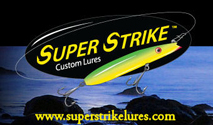
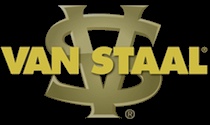
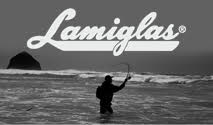
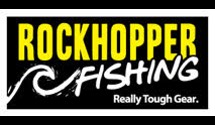
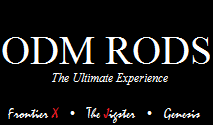
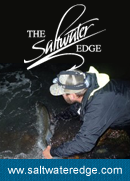
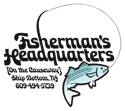

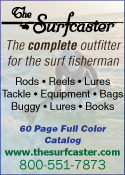
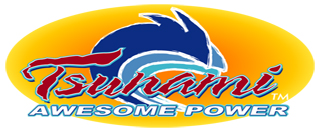

I sent my letter in and hope others do the same.
↓Hi Zeno!
1st i have ton of respect for you !
↓The BIG difference between 1985 and 2019 is the lack of fish period!
for instance NOBODY catches bluefish or Weakfish anymore.the amount of seals in are waters is crazy !
I believe climate change fertilizer and OVERFISHING is our biggest problem.
I vote for 1 @35
Bringing back memories of some 10 years ago when I made a suggestion for the then Striped Bass shortage and was laughed at. I told all that I would be back in ~10 years. Now after you have had 10+ years of dealing with ASMFC/Maryland/Virginia/North Carolina give it to You how does it feel? Nothing will change in this mess unless you can get everybody together for ‘gamefish status’. See you in 10 years.
↓